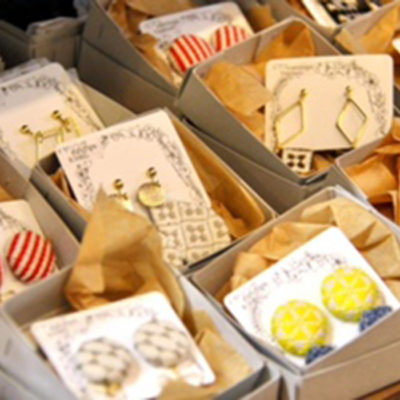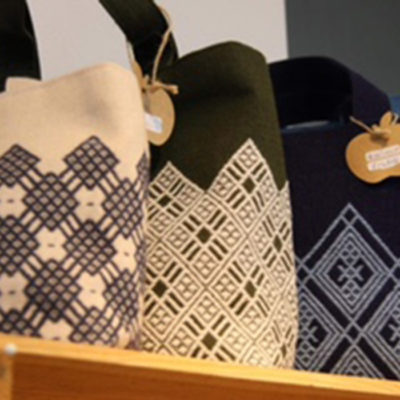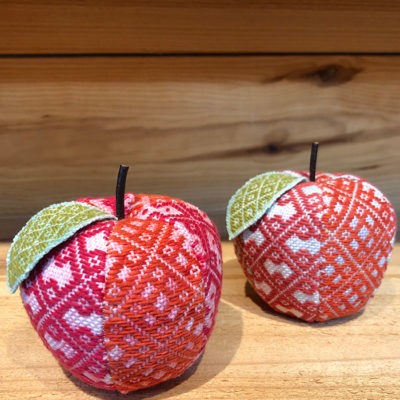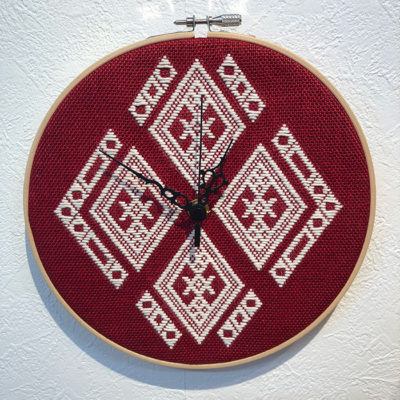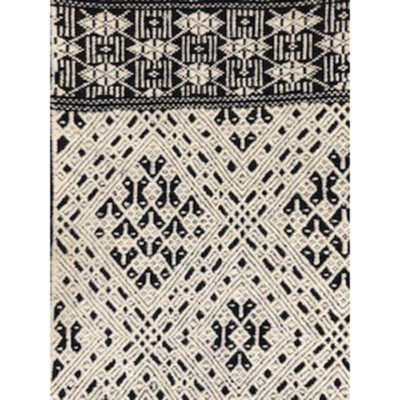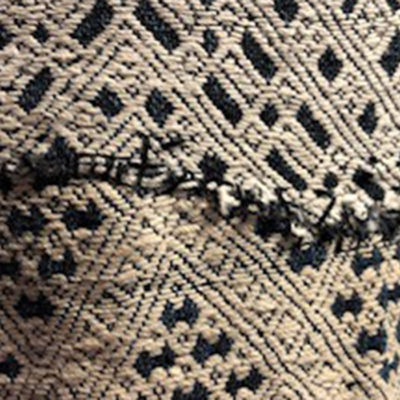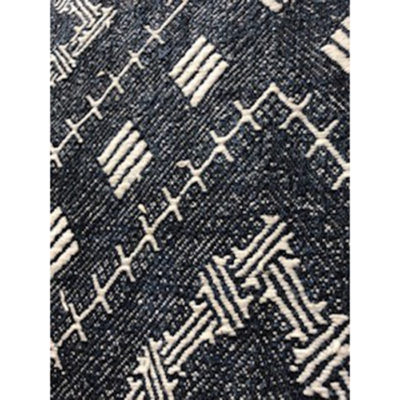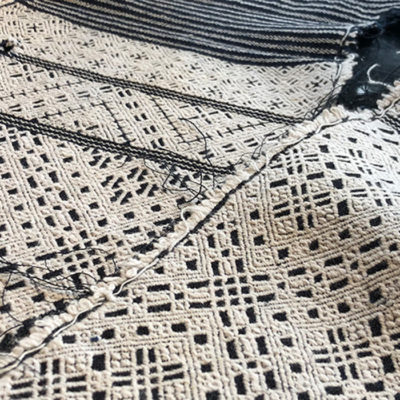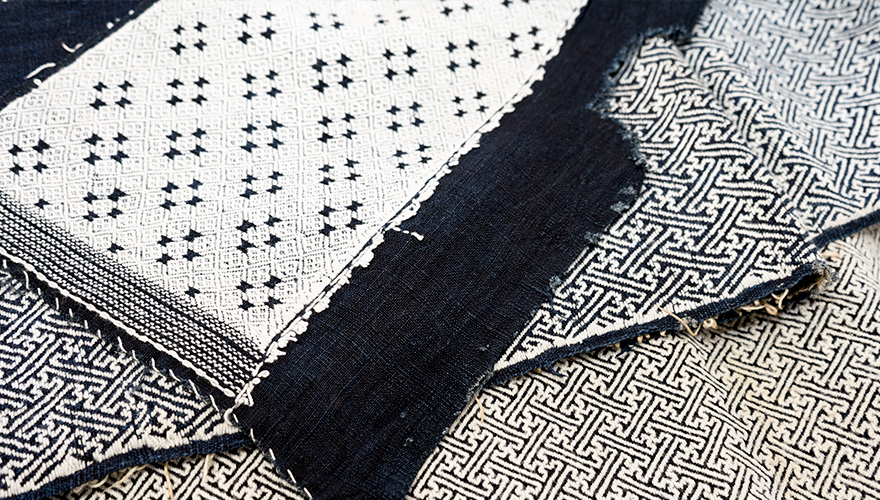
An inherited embroidery stitching technique among the peasant women in the Tsugaru region in Aomori Prefecture. Peasants were prohibited to wear cotton but only allowed to wear linen during the Edo Period. They used homegrown linen and ramie (bast fiber made of inner bark of vegetative starks) to make thread, and wove them into fabric using hand weaving machines. After dying them with indigo, peasant women stitched the crease of the fabric with linen thread to reinforce and contain the heat from escaping .In the beginning, “Jizashi (stitches that are used to completely cover a section of the background fabric)” was used to pick up the texture in a single line. Eventually geometric patterns were introduced and stitched onto kimono during the off-season, wishing good health for the family.
History
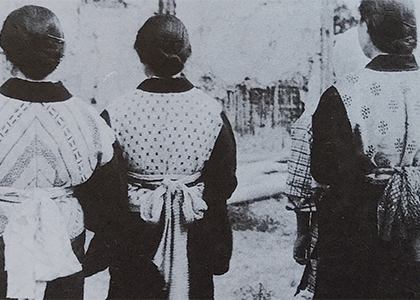
Cotton did not grow in Tsugaru, so most of the clothing was made of linen.
In 1724 (Kyoho 9th year), the “Peasant Frugality Restriction Ordinance” regulated not only work clothes, but also underwear, obi (belt), and headgear. The winter in Tsugaru was very harsh, and peasants who were not allowed to wear cotton, stitched the creases of the fabric with linen thread to keep the body warm and to also reinforce any necessary stitching. In the beginning, “Jizashi” was used to pick up the texture in a single line, but eventually geometric patterns were devised.
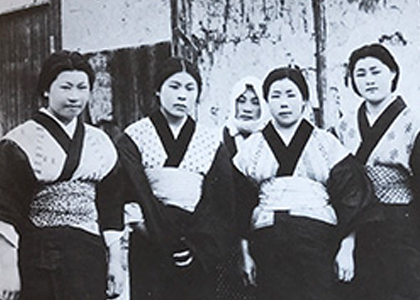
As the ban on cotton was lifted in the Meiji era, it became easier to obtain cotton thread, and linen fabric dyed with indigo started to be stitched with white cotton thread. Women put a lot of thought into their designs, and Kogin embroidery was at its peak as various patterns were gradually being created. The railway between Ueno and Aomori was opened in 1884, and extended from Aomori City to Hirosaki City in 1897. This allowed people to freely obtain durable and warm cotton clothing, causing Kogin embroidery to go downhill rapidly around the year of 1898. Japanese women started to prefer “Kasuri” (splashed patterns) and hand-weaving over traditional Kogin-sashi.
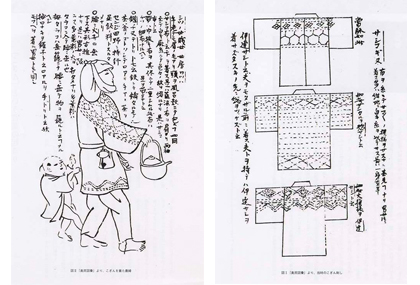
In the Showa era, the Tsugaru Kogin embroidery regained attention by the “Folk Craft Movement” led by Soetsu Yanagi and many others. They said, ” How impressive are Tsugaru women, for they have left us such a thing. Linen and cotton were the fabrics of the indigenous people who were banned from using silk; however, they gave birth to such a beautiful piece in the midst of oppressive prohibition. It was a fortune in the unfortunate situation, a silver lining of people being the Tsugaru woman who made such beautiful pieces in response to their lives. ” (1932 Kogei [Handicrafts])
In 1934, there was a sign of renaissance in handicrafts and folk crafts nationwide. In 1943 the “Kogin Promotion Association” was formed, and Tsugaru Kogin embroidery began to spread. Now, Tsugaru Kogin embroidery has become familiar not only in Japan but all over the world accompanied by handmade movements.
Type / Pattern
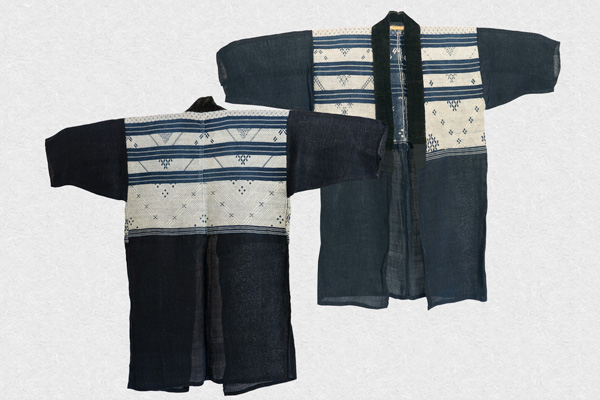
Higashi (East) Kogin
It was made in the granary areas such as Kuroishi City and Hirakawa City on the east side of Hirosaki City bordered by Iwaki River.
Many of them are stitched in a coarse fabric woven with thick linen thread. The pattern has no stripes, but the same pattern is used repeatedly from the front to the back, or the flowing pattern and the surrounding pattern are used. These are distinctive in their overall boldness and largeness.
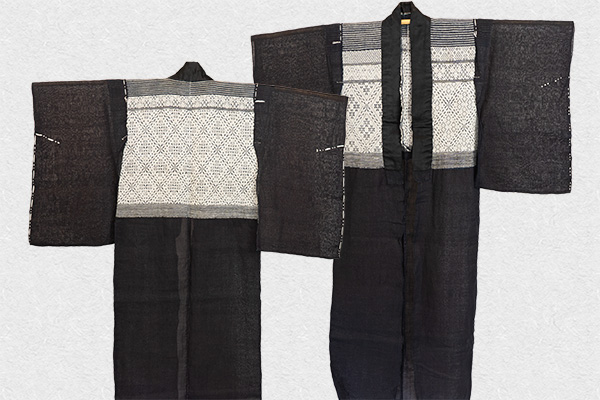
Nishi (West)Kogin
It was built in the Nakatsugaru district on the west side of Hirosaki City where the castle was located across the Iwaki River. Because it was stitched in a fabric woven with fine threads of ramie, the pattern is also distinctive in their denseness and fineness. It is also called striped Kogin because it has stripes on the shoulders to carry heavy loads. The back body is stitched with a pattern called “kutsuwa tsunagi (Sakasakobu)”, which is regarded as an amulet.
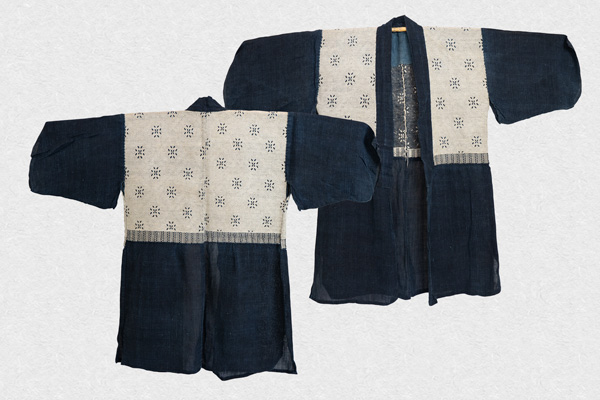
Mishima (Three stripes) Kogin
It is made mainly in the former Kanagi Town (currently Goshogawara City), downstream of the Iwaki River. It features three thick striped patterns on the front and back. The area around Kanagi Town is often struck by cold weather and bad harvests, making living conditions extremely poor. Due to the situation, it is thought that they could not afford to work on Kogin embroidery because the existing Mishima Kogin is very rare and extremely valuable.
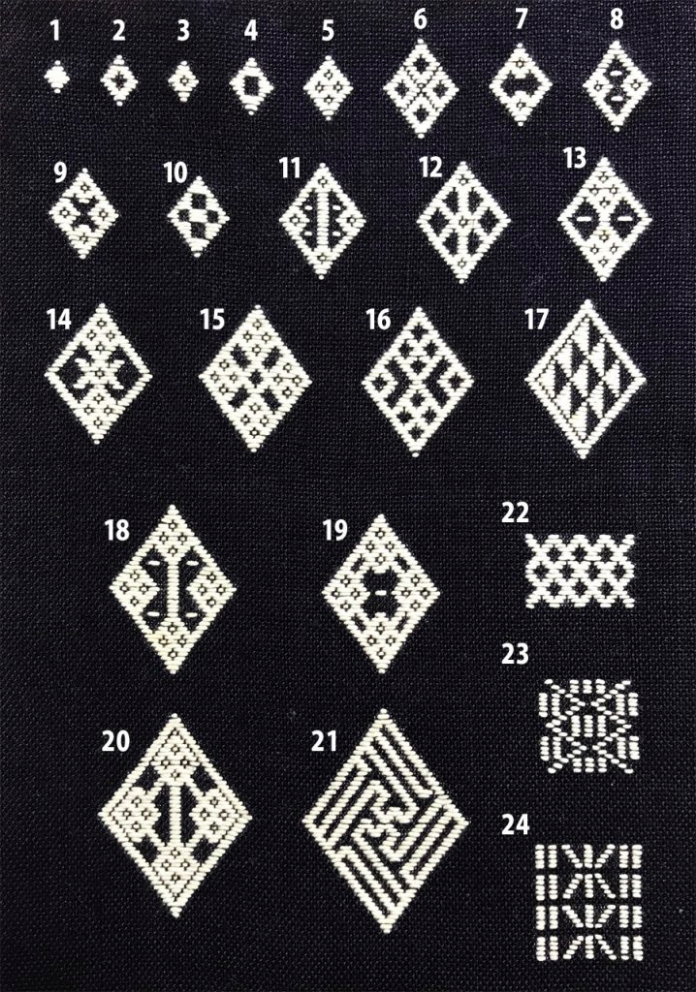
About The Word “Modoco”
Modo” of “modoco” = “base” that originally reads as “moto” in the Japanese language. However, the intonation changes slightly when you add the local Tsugaru-ben dialect into “Modo.”
“Co” of “modoco” is also a Tsugaru-ben dialect word, and usually comes after a noun.
Some examples of these words being used are: hanaco (flower), Amecco (candy), and mameco (bean).
Therefore, “modoco” means a base pattern of Kogin embroidery. Currently there are about 40 types of patterns that exist, and they create geometric patterns combined with “Modoco.”
- カチャラズ Kacharazu
- マメコ Mameco
- ハナコ Hanaco
- イシダタミ Ishi Datami
- ムスビバナ Musubibana
- 四枚菱 Yonmai Hishi
- シマダ刺 Shimada-sashi
- フクベ Fukube
- コマクラ刺 Komakura-sashi
- ウロコ形(小)Uroko-gata (Small)
- フクベ Fukube
- 猫の足 Neko no Ashi
- 猫のマナグ Neko no Managu
- テコナ Tecona
- ヤスコ刺 Yasuco-sashi
- マメコの四つコゴリ Mameco no Yotsu Cogori
- ウロコ形(大) Uroko-gata (Large)
- クルビカラ Kurubikara
- ベコ刺 Beco-sashi
- ウマのクツワ Uma no Kutsuwa
- サヤ形 Saya-gata
- マメコの連続 Mameco no Renzoku
- 竹の節 Take no Fushi
- 〃

